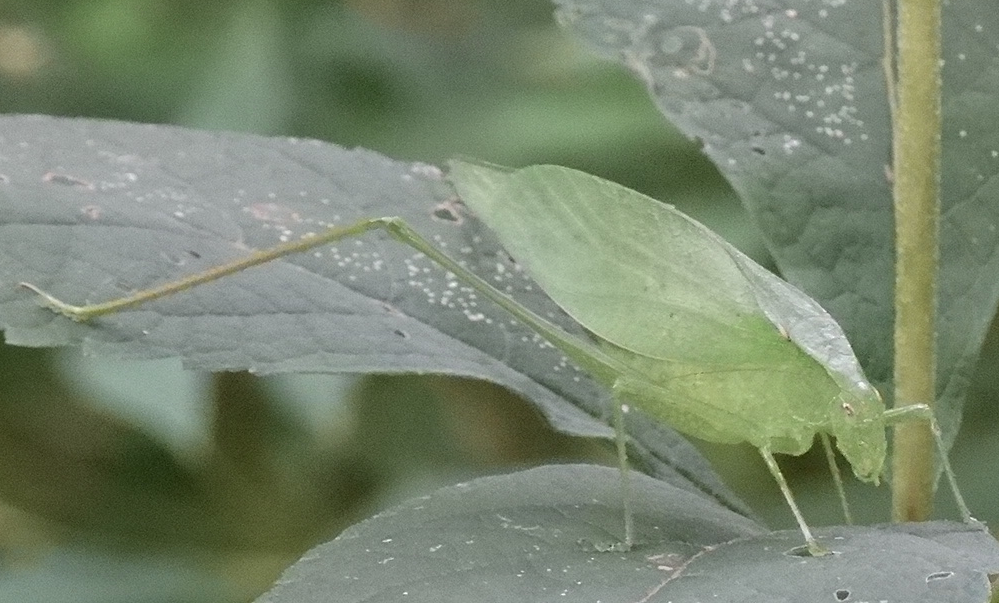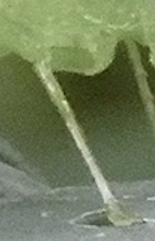This week's bloomlist for Wildflower Island is at the end of the post, and Bonnie's pictures
can be found HERE. Peterson names are used for consistency wherever possible, and comments
and clarifications are welcome in the comments section. This post has been REVISED —
a couple of times (!).
This is the last post for the season, so we say good-bye to all the glorious flowers we saw this summer, even if today we only got the merest sampling ... Sneezeweed (
Helenium autumnale), Cardinal-flower (
Lobelia cardinalis), ...
Blanketing the lake today were the Bur-marigolds, almost looking like Sunflowers. I think these are the Nodding species (
Bidens cernua) rather than the Smooth (
B. laevis), which are supposedly coastal. The flowerheads face downwards as they age.

So out of character hiding in the shadows at no.13 was a single False Dragonhead today (
Physostegia virginiana), but some of the many in bud should open by the last Open Gate day this weekend.
The Asters and Goldenrods continuing to confuse, but there are some new ones blooming this week that I won't try to ID. Look for yellows, whites, and blue-lavenders types. And some flowers we thought were gone for the season have come back, like Herb-Robert (
Geranium robertianum).
Out in The Woods, the Japanese Stiltgrass (
Microstegium vimineum) was definitely in bloom, in patches next to the White Cutgrass, which is almost done.


At no.22 was the largest patch of Indian-pipe (
Monotropa uniflora) we've ever seen in one spot. Try not to miss it, as it is so unusual.
There was a strange covering on the mushroom left, and fungus specialist Leon Shernoff was able to tell us what it is: Troll Dog fungus (
Syzygites megalocarpus). The cap was still firmly in the ground, engulfed by the fibrous stuff engulfed. More info
here.
We didn't get a picture of the Arrow-leaved Tearthumb (
Persicaria sagittata) today over by the birdblind, but I found Bonnie's shot of it from 2017 (below). The leaves of this species are narrower than those of the Halberd-leaved (
P. arifolia), and they extend past the stem, almost clasping. See GoBotany's pictures at
this link.

Also by the birdblind is a patch of Nodding (Pale) Smartweed. Unlike Mild Water-pepper (
P. hydropiperoides), the sheaths of the Pale species have no hairs and the tips of the inflorescences bend over rather than stand erect.

This is a picture of the sheath from
Minnesota.

We noticed an infant Tulip-tree on the left about 2/3 of the way down the stone steps from the parking left. It has huge leaves for its size and looks sturdy, so it's going to be fun to see how much height it gains by next year.
This is the last post for the season, so we say good-bye to all the glorious flowers we saw this summer, even if today we only got the merest sampling ... Sneezeweed (Helenium autumnale), Cardinal-flower (Lobelia cardinalis), ...
and lots more ...
(and by the way, I tried to open the tip of these today and couldn't see any extruding, so am thinking this is the species
Gentiana clausa (see
GoBotany's description, which is a bit technical). Up til now, we've been thinking it was
G. andrewsii.
By next week the whole Island should be decorated with the fairy blooms of White Snakeroot (
Ageratina altissima).
The picture is from
Minnesota Wildflowers, but see
Ten Random Facts for a heads-up about his beguiling plant with some hidden secrets.
I leave you with some pictures of the ever- inscrutable asters and goldenrods ...


_________________________________________________________________________________

 This blog is on hiatus for until mid-April when Wildflower Island
re-opens, but you might want to continue enjoying the treasures of the natural world by signing up for Rick Bunting's short, daily and spectacular photojournalistic newsletters.
This blog is on hiatus for until mid-April when Wildflower Island
re-opens, but you might want to continue enjoying the treasures of the natural world by signing up for Rick Bunting's short, daily and spectacular photojournalistic newsletters.































































